How to Make Gun Cotton
 Overview of How To Make Gun Cotton
Overview of How To Make Gun Cotton
Immerse clean cotton wool in a mixture of equal parts of the strongest nitric and sulphuric acids, allowed to cool for one minute, wash in plenty of cold water, and dry in the sun or by a very gentle artificial heat. For soluble guncotton used in making collodion, see PHOTOGRAPHY.
Lunk’s Gun-cotton
This process gives a gun-cotton which is constant in composition, not liable to change, and of a moderate rapidity of explosiveness. It has been favorably reported on by the Imperial Commision. The following directions are extracted from the specifications of his patent:
- The cotton or other vegetable fiber is first taken and spun into loose threads of sufficient strength to be easily handled.
- The cotton must then be thoroughly boiled in a solution of potash or of soda, in order to remove all greasy substances which the cotton may contain, and after thus boiled it may be exposed to the sun, or wind, or in a heated room, to dry.
- The cotton must now be taken into a room heated to 100 Fahr. in order to make it perfectly dry.
- A mixture is now made containing 1 part weight of nitric acid of 1.48 to 1.50 specific gravity, and 3 parts weight of common sulphuric acid. This mixture must stand in closed earthen or glass jars for several days, or until the two acids become fully mixed and cooled.
- This mixture of acids is now put into an apparatus containing three apartments; one for the main bulk of the acids, one for the immersion of the cotton, and one for receiving the cotton after being immersed. This apparatus may be made of cast-iron
- The cotton is now taken and dipped in the acidbath, in said apparatus, in such a manner that every 3 oz. of the cotton must come in contact with 60 lbs. of the mixture of acids, or in other words, the bath must contain fully 60 lbs. of the mixture while parcels of 3 oz. of cotton are being dipped. The parcels thus dipped must be gently pressed, and the acids allowed to flow back into the acid-bath, and the parcels are then put into the third apartment of the apparatus, where for every 1 lb. of cotton there must be 10 1/2 lbs. of the said mixture of the acids. The cotton must remain in this state subject to the action of the acids for 48 hours, and the mixture must always have an equally strong concentration, and must be kept under a uniform temperature by a cooling process.
- The cotton is now taken out from the acids and pressed, and then put into a centrifugal machine to remove all surplus acids.
- The cotton is again put into another centrifugal machine, into which a constant stream of fresh water is admitted. This process is intended to remove the last particles of adherent acids.
- The cotton is now taken and put into a flume or trough, and scoured in such a manner that a running stream of fresh water may pass through and over it; and the same must remain in this situation for at least 14 days. To lessen the time for this operation the cotton may be immersed or saturated in alcohol for the space of 24 hours. This process is also intended to extract all and the last particles of acids that may possibly adhere to the cotton.
- The cotton is now taken from the stream of water, or if from the alcohol it must be washed, and then boiled in a solution of common soap and again dried. This process is intended to restore the cotton to its original softness and appearance.
- The cotton is now taken and immersed in a solution of water-glass of 1 lb. to 2 lbs. of soft water which must be 1.09 specific gravity of concentration. To 1 lb. of cotton 198-1000ths of a lb. of this solution of 46 Beaume is required. The cotton is then taken out of this solution and exposed to the action of the atmosphere for at least 4 days. This process has the tendency to preserve the material, and also to make its explosive qualities less rapid.
- The gun-cotton is again washed in soft water free from lime, dried, and then packed in wood or metal boxes for storage or exportation; and may be used for artillery, torpedoes, shells, mining, blasting, small arms, and for all purposes where explosive power is required.
- All other vegetable fibres may be treated and manufactured as herein stated, which process will make the same explosive, like the gun-cotton and adapted to the same purposes.
How To Make Gun Cotton is an excerpt from The Household Cyclopedia of General Information, published in 1881.
Books on Explosives
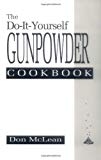
Do-It-Yourself Gunpowder Cookbook
Learn how to make gunpowder from such items as dead cats, whiskey, your living room ceiling, manure and maple syrup with simple hand tools and techniques that have been used for centuries. This is a practical and safe approach to making the oldest propellant/explosive known.
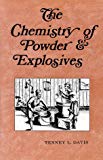
The Chemistry of Powder and Explosives
The late Dr. Davis produced this book as part of the material used for training his grad students in WWII about chemical engineering aspects of explosives. However, the best part of the book is probably the section on the history and development of explosives. Davis was one of those scientists who had a rare grasp not only of the theoretical and practical aspects of his field, but also its historical underpinnings. This book doesn’t compare with Urbanski as far as chemical engineering goes, but rather gives a brief overview of many diffrent materials that were in use in the mid twentieth century. I wouldn’t recommend this book as a lab manual, but would heartily endorse it as a place to begin the study of the history of this aspect of science.
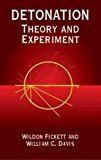
Detonation: Theory and Experiment
Comprehensive review of detonation explores the “simple theory” and experimental tests of the theory; flow in a reactive medium; steady detonation; the nonsteady solution; and the structure of the detonation front. Many simple cases are worked out for illustration.
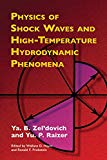
Physics of Shock Waves and High-Temperature Hydrodynamic Phenomena
The physical and chemical processes occurring in gases at high temperatures are the focus of this outstanding text by two distinguished physicists. They discuss essential physical influences on the dynamics and thermodynamics of continuous media, combining material from such disciplines as gas dynamics, shock-wave theory, thermodynamics and statistical physics, molecular physics, spectroscopy, radiation theory, astrophysics, solid-state physics, and other fields.
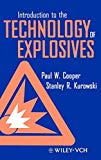
Introduction to the Technology of Explosives
Introduction to the Technology of Explosives Paul W. Cooper and Stanley R. Kurowski Introduction to the Technology of Explosives is a clear and concise survey of the technologies and physical processes involved in explosive phenomena. The book is intended to provide the worker new to the field with sufficient background to understand problems that may arise and to interact intelligently with specialists in the field. The book covers the fundamentals of the chemistry of explosives; the mechanics of burning; sound, shock, and detonation; initiation and initiators; scaling in design and analysis; and off-the-shelf explosive devices. It provides the basic calculational skills needed to solve simple, first-order engineering design problems, and emphasizes the crucial importance of safety considerations. The book contains a broad range of data on explosive materials, and their properties and behavior, along with extensive lists of useful references. Example problems with solutions are provided in each technical area, as are descriptions and analysis of a wide variety of explosive devices. The book concludes with a thorough and comprehensive description of regulatory requirements for the classification, transportation, and storage of explosives, and an extensive guide to explosives safety in plant and test facilities. This book will be of interest to explosives technicians and engineers, government regulators, crime and accident scene investigators, and instructors in military, police, and FBI bomb schools.
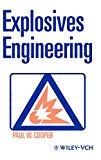
Explosives Engineering
This graduate text, and Cooper’s companion introductory text (‘Introduction to the Technology of Explosives’), serve the same markets as the successful explosives reference by Meyer, now in its 4th edition. VCH also published the International Journal of Propellants, Explosives, and Pyrotechnics. The resulting package would give VCH the major presence in the field. This text presents the basic technologies used in the engineering of explosives and explosive systems, i.e., chemistry, burning, detonation, shock waves, initiation theories, scaling. The book is written for upper-division undergraduate or graduate-level scientists and engineers, and assumes a good grasp of basic physics, chemistry, mechanics and mathematic through calculus. It is based on lecture notes used for graduate courses at the Dept. of Energy Laboratories, and could serve as a core text for a course at schools of mining or military engineering. The intent of the book is to provide the engineer or scientist in the field with an understanding of the phenomena involved and the engineering tools needed to solve/ design/ analyze a broad range of real problems.
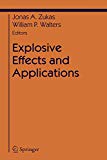
Explosive Effects and Applications
This is a broad-based text on the fundamentals of explosive behavior and the application of explosives in civil engineering, industrial processes, aerospace applications, and military uses.
The book includes chapters on all aspects of explosives, each written by an expert in the field: Introduction to Explosives (W.C. Davis) Explosives Development and Fundamentals of Explosives Technology (P.R. Lee) Shock Waves, Rarefaction Waves, Equations of State (W.C. Davis) Introduction to Detonation Physics (P. Cooper) The Chemistry of Explosives (J.C. Oxley) Theories and Techniques of Initiation (P.R. Lee) The Gurney Model for Explosive Output (J.E. Kennedy) Hazard Assessment of Explosives and Propellants (P.R. Lee) Safe Handling of Explosives (J.C. Oxley) Demolitions (C. Weickert)
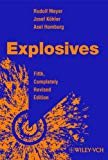
Explosives
This world-famous reference work has been enlarged and updated without tampering with its tried and tested format. Around 500 alphabetically ordered, monographic entries consider the physicochemical properties, production methods and safe applications of over 120 explosive chemicals; discuss 70 fuels, additives and oxidizing agents; and describe test methods.
The extensive thermodynamic data have been thoroughly updated and for the first time are also provided in electronic format. The included CD-ROM was compiled by the Fraunhofer Institute of Chemical Technology (Pfinztal, Germany) and represents an excerpt from the ICT Thermodynamical Database. Not only additional thermodynamic data, and references to further reading, but also enhanced search facilities are provided.
Other key features include: the 1500-entry combined index and glossary (comprising terms and abbreviations in English, French and German), conversion tables and many literature references.
This book is suitable for explosive experts and also for translators, public authorities and patent lawyers.
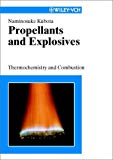
Propellants and Explosives: Thermochemistry and Combustion
The combustion phenomena of propellants and explosives are dependent on physicochemical parameters such as ingredients, catalysts, pressure, initial temperature, and flow field. This book presents the fundamental bases of energetics of materials, deflagration and detonation, thermochemical process of decomposition and combustion, and combustion wave structures. The combustion mechanisms of various types of energetic materials, propellants, and explosives are discussed based on the heat transfer process in the combustion waves. The burning rate models are also presented to understand the rate-controlling steps of combustion processes, which show the relationships of burning rate versus pressure and initial temperature.
The combustion processes of propellants and explosives are highly complicated because of the heterogeneous structures of the materials, and because of phase changes from solid to liquid, and to gas under high pressure and temperature conditions. Therefore the real combustion phenomena are demonstrated by the use of a number of colored photographs during burning. New applications of energetic materials such as pyrolants and ducted rockets for an advanced propulsion system are also described.
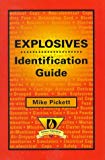
Explosives Identification Guide
This book is a reference guide to explosives for emergency responders such as firefighters, police officers, and EMS staff as well as security personnel. Through color photographs and short descriptions, the student can identify explosives by general type and learn the appropriate way to treat each of them. Written in a general, non-technical style, the book is a fast and easy guide for those with little or no knowledge of, or experience with, explosives.
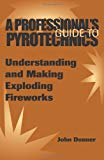
Professional’s Guide To Pyrotechnics : Understanding And Making Exploding Fireworks
This book offers a well-rounded selection of reliable, well-researched formulas for the most popular exploding fireworks, including M80s, cherry bombs, ash cans, chasers, globe torpedoes, Knallkorpers, aerial bombs, cracker balls, Flashcrackas and more. For academic study only.

Home Workshop Explosives, Second Edition
This book earns the title! Over the course of 172 pages, I have taken all of the great material in the first edition and added to it a series of recipes and procedures which produce military grade explosives from commonplace items and materials. In doing so, I conclusively prove that the restrictions which have been placed upon the access to the commercially produced explosives which were so freely available in my youth are all futile. The real enemies in “the war on terror” are not inanimate objects such as explosives. The real enemies are the politicians who have flung open our borders to infiltration by Moslem guerrillas. These guerrillas are already well versed in the techniques of improvised weaponry manufacture.
This treasure trove of explosive information features The Hardware Store Nitro Recipe, Fuel/Air Explosives, military equivalent ammonium nitrate formulations, nitromethane mixtures, and a vastly improved detonator section.
The expose`of the folly of our present policies doesn’t stop there either! Read all about the construction of remote control cruise missiles and RC torpedoes. Claymore mines and air cannons add spice to the stew. Then top it all off with my commentary on the easiest ways to obtain all the materials mentioned in the book.
I’ve read all the books on the topic of explosives from tiny paperbacks to 600 page texts written by PhDs. I have no hesitation saying this book tops them all! It’s my hope that when you finish reading this book, politicians will no longer be able to fool or distract you by blaming an inanimate object such as explosives for the direct results of their disastrous policies.
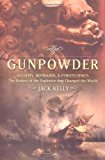
Gunpowder: Alchemy, Bombards, and Pyrotechnics : The History of the Explosive That Changed the World
From veteran author Jack Kelly, a tour through the turbulent history of one of mankind’s most critical inventions-the fiery substance that transformed everything from fireworks in China to warfare in Renaissance Europe and beyond.
When Chinese alchemists fashioned the first manmade explosion sometime during the tenth century, no one could have foreseen its full revolutionary potential. Invented to frighten evil spirits rather than fuel guns or bombs-neither of which had been thought of yet-their simple mixture of saltpeter, sulfur, and charcoal went on to make the modern world possible. As word of its explosive properties spread from Asia to Europe, from pyrotechnics to battleships, it paved the way for Western exploration, hastened the end of feudalism and the rise of the nation state, and greased the wheels of the Industrial Revolution.
With dramatic immediacy, novelist and journalist Jack Kelly conveys both the distant time in which the “devil’s distillate” rose to conquer the world, and brings to rousing life the eclectic cast of characters who played a role in its epic story, including Michelangelo, Edward III, Vasco da Gama, Cortez, Guy Fawkes, Alfred Nobel, and E.I. DuPont. A must-read for history fans and military buffs alike, Gunpowder brings together a rich terrain of cultures and technological innovations with authoritative research and swashbuckling style.
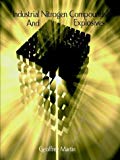
Industrial Nitrogen Compounds and Explosives - Chemical Manufacture and Analysis
Includes the circulation of nitrogen nature, the nitrate industry, the nitric acid industry, the ammonia and ammonium salts industry, synthetic ammonia, the cyanamide industry, the cyanide and prussiate industry, the manufacture of nitrous oxide, laughing gas, nitrogen monoxide and the explosives industry.

Explosives in Metal Mining and Quarry Operations
Includes combustion and explosion, blasting and mine explosives, fuse, detonators, and electric detonators, firing blasts by electricity, the use of explosives in excavation work, use of explosives in quarrying, use of explosives in metal mining and tunneling, drilling and blasting methods on New York rapid-transit tunnel, magazines and thaw houses, permissible explosives, requirement for bureau of mines tests of metal-mine explosives, safe shipment and storage of explosives, publications on mine accidents and tests of explosives.
Videos on Explosives
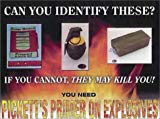
Pickett’s Primer on Explosives
Used by individuals and organizations as training for the identification of and the correct response to commercial explosives, military ordnance, homemade explosives, and weapons of mass destruction. Includes instructor and student guides as well as a book on explosives identification.
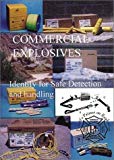
Commercial Explosives
Describes the different commercial explosives such as blasting caps, blasting agents, boosters, detonating cord, black and smokeless powders, and covers safety procedures for securing the area and removing the explosives.
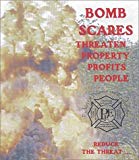
Bomb Scares and Bomb Search Procedures
Examines the conditions that might trigger a bomb threat and the motives behind the threat. “Bomb Scares and Bomb Searches” helps personnel learn how to search for a homemade bomb and how to respond when an explosive is found on site.
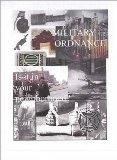
Military Ordnance
Describes the many types of military ordnance. Covers grenades, fuses, shells, land mines, CBU’s and BLU’s, rockets and missiles, incendiaries, simulators and CAD items.

High Explosives
When people think of war, guns, tanks, planes and rockets spring to mind. But without high explosives, none of these weapons would work. More than anything else, gunpowder and its many other combustible cousins are at the heart of modern warfare. HIGH EXPLOSIVES ventures from Ancient China to today’s high-tech battlefields to tell the story of the powders, plastics and countless other explosive mixes mankind has developed in the unending quest to create the perfect weapon. Find out about the many different types of explosives, from mines to ballistic missile payloads, and see how they were developed and deployed. See stunning evidence of their incredible power in the lab and on the battlefield and learn what the future of explosives may hold. And join military historians as they trace the refinement of battlefield explosives, and how they have changed the face of warfare.